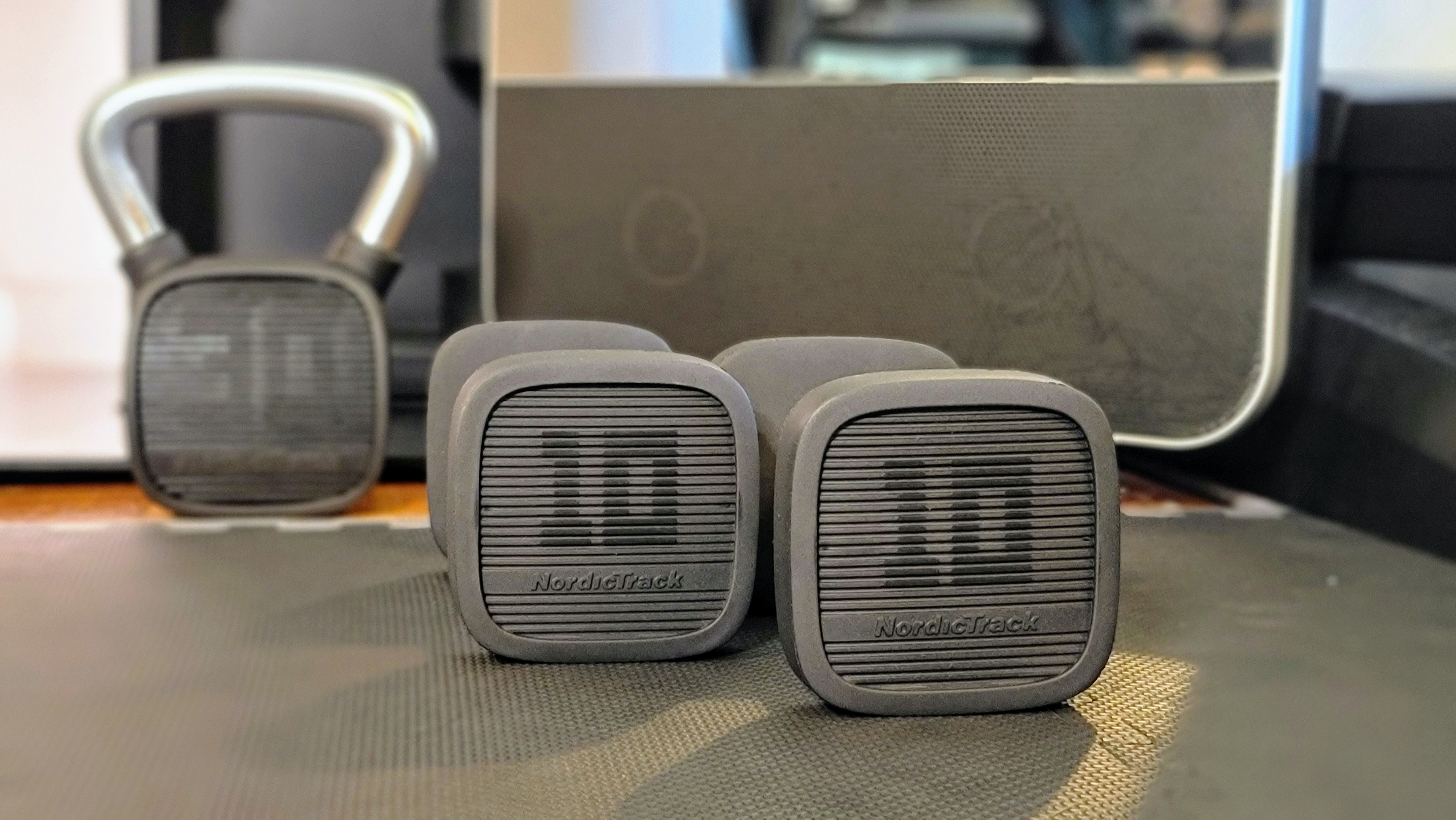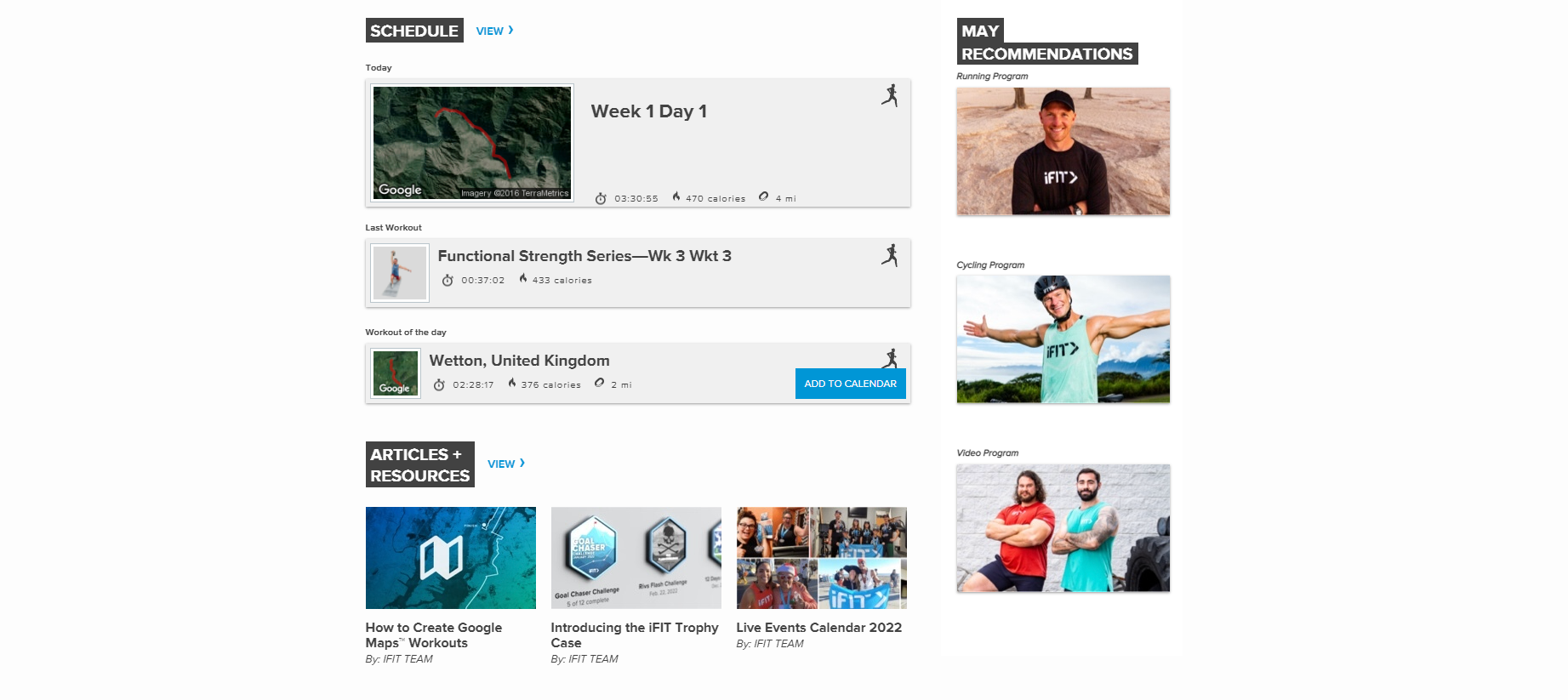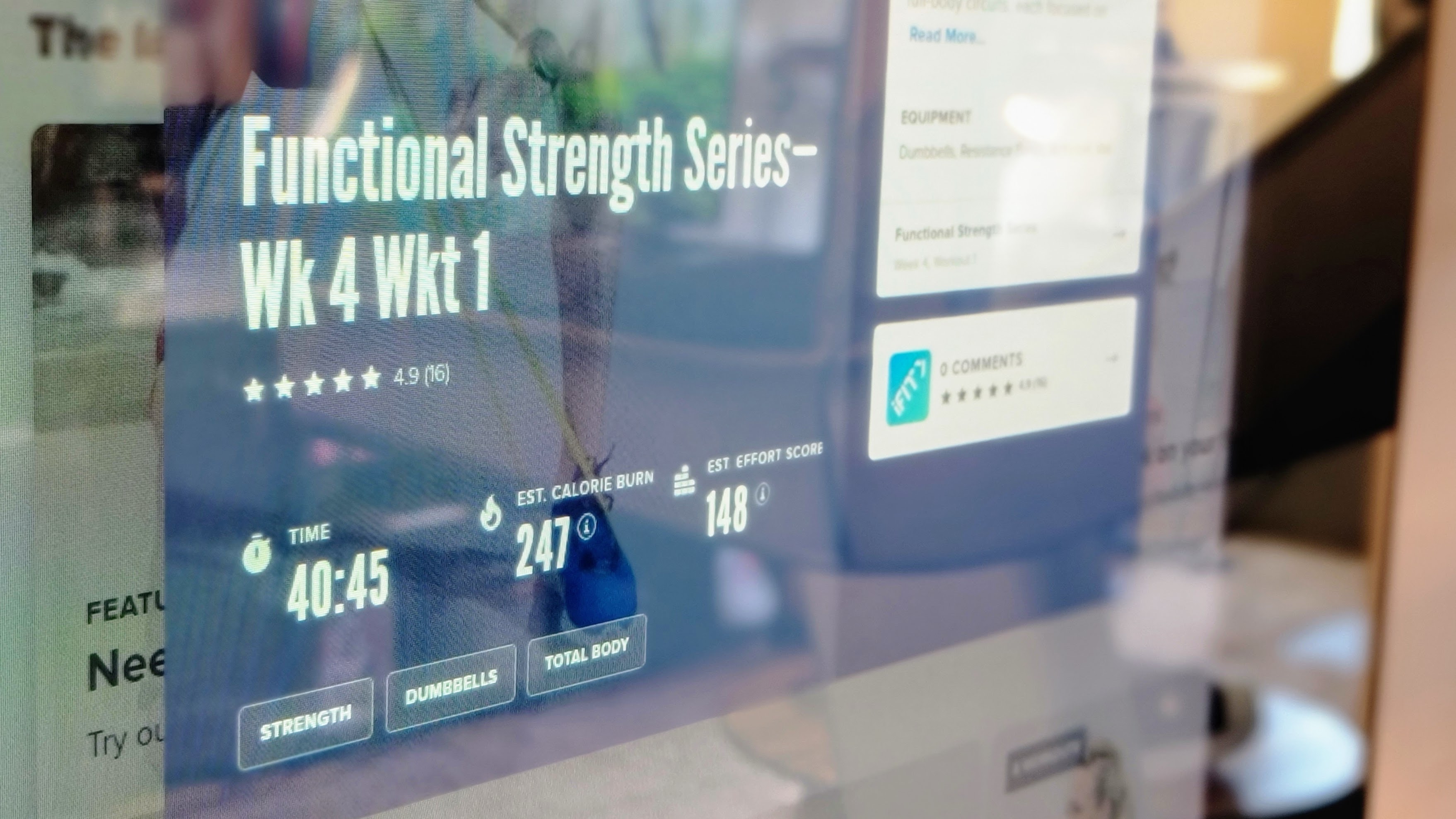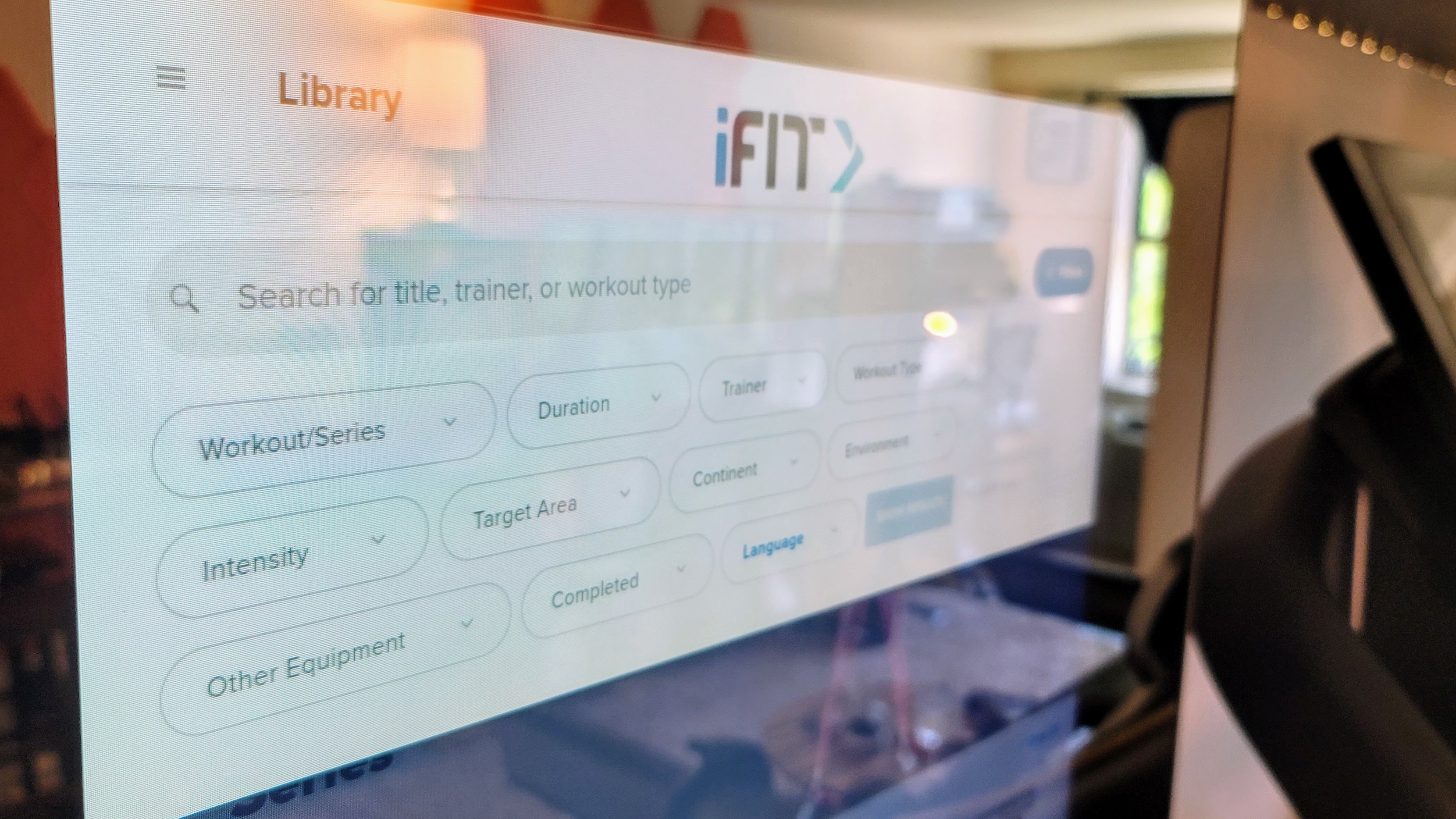NordicTrack Vault review: meet your new tower of power
This high-end smart fitness mirror does double duty as an all-in-one fitness hub


The NordicTrack Vault smart mirror is an all-in-one fitness hub connected to iFit’s comprehensive library of weighted workouts. And when you’re done sweating for the day, it doubles as a fantastic full-length mirror.
-
+
Dynamic library of iFit classes
-
+
Multi-angle mirror design
-
+
Compact storage for all weights/accessories
-
+
Excellent dumbbell set
-
-
Very bulky/heavy
-
-
Mirror is a fingerprint magnet
-
-
Requires iFit membership
Why you can trust T3
Whether you call it a smart gym or smart mirror, the NordicTrack Vault represents an equal balance of fitness tech and functional furniture. It combines the convenience of hideaway storage for all your home gym weights with a high-end mirror that streams on-demand fitness classes – courtesy of iFit – directly into your living room. This style of personal training has surged in popularity ever since the pandemic hit, especially for city dwellers, and the NordicTrack Vault is but one in a futuristic fleet of fitness machines from the likes of Fiture, Lululemon, Tempo, and many more.
Whereas wall-mounted devices like Tonal and the Mirror take up far less space than the NordicTrack Vault, they’re also immobile once installed, and reliant on specific mounting parameters to function properly. The Vault is heavy as hell, but you can still move it around with a dolly and/or gym buddy or two. And while you’d never guess at first glance, the Vault also functions as a deceivingly spacious shelf to store all your workout gear.
Be warned: futuristic fitness ain’t cheap. You’ll need to cough up a $39 / £28 monthly subscription in addition to buying the Vault, but it might be worth it in the long haul. Read on to find out why.
I tested the NordicTrack Vault at home over a few weeks, putting the machine through its paces. For more on T3's reviews process, take a read of our How we test page.

NordicTrack Vault review – key specs
Screen: 32-inch HD touchscreen
Speakers: Dual 3-inch (Bluetooth-enabled)
Connectivity: Dual-band 802.11 Wifi
Weights Included: Yes (with Complete package)
Weights/Accessories Included: Workout mat, yoga blocks, loop bands, resistance bands, dumbbells (5 to 30 pounds), kettlebells (20 and 30 pounds each), premium shelves, cleaning towel
Size: 72.7 x 31.7 x 22.6 inches
Standalone Weight: 258 pounds
Warranty: 10 years (frame), 2 years (parts), 1 year (labor)
NordicTrack Vault review: price and availability
There are two versions of the Vault tower: Complete and Standalone. The Complete package costs $2,000 / £2299 and includes an exercise mat, two yoga blocks, three loop bands, three super resistance bands, six pairs of dumbbells (ranging from 5 to 30 pounds), two kettlebells (20 and 30 pounds), removable shelving, and a cleaning towel to keep errant fingerprints at bay.
The less expensive Standalone version of the Vault (US only for $1,500) includes just the tower itself (plus the shelving and towel), but if you already own a solid set of adjustable dumbbells for your home gym, that might be all you need to kickstart that new weight-training regimen. (Check out the NordicTrack Select-a-Weight Dumbbell Set, for example.) Both versions of the Vault come with a one-month trial of iFit, which renews at $396 / £336 every year.

NordicTrack Vault review: design
Once I’d assembled the whole kit and kaboodle, I couldn’t help but step back and admire the ergonomic simplicity of the Vault, a mini-monolith that would make a fine addition to any bedroom set. It’s unassuming on the outside, but the mirror swings out when unlatched to reveal all of your dumbbells and gym gear on the removable shelving. The 71 x 23 x 9-inch tower sits on a thin-yet-heavy steel plate to keep it from tipping, and with all the weights in place, the whole thing clocks in at a hefty 518 pounds (235kg). To quote every American man who’s ever packed for a road trip: “That thing ain’t goin’ anywhere.” (Not without a gym buddy to help, anyway.)
Get all the latest news, reviews, deals and buying guides on gorgeous tech, home and active products from the T3 experts
The Vault’s hideaway dumbbells feature an excellent inner grip with rubberized ends that don’t make nearly the same racket as the clunky adjustable dumbbells I’ve been testing lately. (They’re easier on your floors, too.)

The best part of the Vault’s front-and-center mirror, however, is the built-in 32-inch HD touchscreen, equipped with 60W stereo speakers on the bottom, making the whole thing look like a giant iPhone when in use. This screen area is smaller than the Tempo Studio’s gorgeous 42-inch slab, and I’m not sure why. From a hardware perspective, there appears to be enough room on the Vault for at least 42 inches of iFit instruction instead of 32. On the other hand, a dual-screen situation might be interesting to see for future models, if executed properly. (Say, for example, a 32-inch touchscreen up top and smaller 22-inch screen near the bottom of the mirror, for following along to floor-based exercises.)
Note: I’m still waiting to see what NordicTrack does with the hidden – and currently inactive – webcam that’s clearly built into the top of the mirror. Good thing I’m not a spyware conspiracy theorist.

NordicTrack Vault review: setup and installation
For an extra $200 / £199, NordicTrack’s delivery team will assemble the Vault in the room of your choice, which takes the hassle out of unpacking, unwrapping, and installing everything yourself. My review unit didn’t come with this service, but since setting up new tech is half the fun for the giant child living inside me, this was no biggie.
Or so I thought. It took two full hours to unbox and set up this beautiful monstrosity (every weight is individually wrapped), and by the time I was done, I understood why NordicTrack recommends two sets of hands instead of one for the installation process. Long-story-long: I’d recommend spending the extra cash on professional installation if you can swing it, because putting this thing together by myself sure felt like I was tempting fate as I wiggled the mirror piece onto its hinges and tightened everything into place. ‘Twas a workout in itself.
I already had an active iFit account thanks to the ProForm Pro 2000 treadmill and NordicTrack FS14i FreeStride Trainer, so once the Vault was fully assembled, all I had to do was catch my breath, turn it on, and sign in.

NordicTrack Vault review: iFit classes
As of this writing, I counted at least 350 classes available through the Vault’s searchable library of workouts. (Up from roughly 250 classes last year. This is a fine example of iFit’s ever-expanding ecosystem, which spans multiple devices and machines.) You can narrow your searches based on workout duration, muscle groups desired, and so on.
There are currently more than 30 different iFit trainers and coaches available on the Vault, though the company employs dozens of others for their other elliptical, running, rowing, and cycling classes. After sampling a number of sweat sessions from Casey Gilbert, Alex Morgan, John Peel, Gideon Akande, and several other certified personal trainers, I really did appreciate their detailed step-by-step instructions; each one has a different energy and coaching style.
In contrast to the Tempo Studio, which only offers classes through the machine itself, you simply get more value with the Vault’s iFit membership, since you can access certain classes on your phone, smart TV, or any iFit-equipped device. In short, the more iFit-friendly gadgets you own, the more dynamic your membership becomes. Whenever I turn on the machine, there’s always a new challenge, series, or targeted workout for me to explore – though not in an overwhelming way. And while I’m not much for gamifying my workout routine, I get bored easily with the same old strength-training exercises every week, and iFit allows me to learn new stuff (about both the world of fitness and my own body) with each and every class.

That being said, the Tempo Studio’s 3D sensors create a much more tech-centric training experience overall, and the Vault has no such rep-counting or form-correction to speak of. (Yet.) However, you need to stand six feet from the Tempo Studio’s display in order for the sensors to work properly; you can stand much closer to the Vault’s screen during each workout, which makes its smaller 32-inch display way more practical in practice. Until the day I swing a kettlebell into that glass surface, anyway. (So far, so good.)
The Vault feels like it was built for those who already know their way around the gym – and the basics of proper form. Compared with Tempo’s more hands-on approach to learning the ropes of weight training. iFit’s classes felt slightly more rushed, but if you’re ever lagging behind in a given class – or just need to catch your breath – you can pause the workout with a quick tap of the screen, and resume after you’ve taken a few moments to collect yourself.
I absolutely love the Vault’s swiveling mirror, which you can turn to any angle you like. (It latches in place at the top.) In contrast, the Tempo Studio and wall-mounted Tonal have exactly one angle for their smaller reflective surfaces: straightforward.

NordicTrack Vault review: Verdict
Over the past few years, virtual personal trainers (ie, smart gyms) have become so advanced that many of them outpace the equipment you’ll find in many public fitness facilities. But not every smart mirror was created equal, and the NordicTrack Vault certainly isn’t meant for powerlifters. For casual weight training and targeted fitness routines, however, there’s a lot to like about iFit’s ever-evolving ecosystem of best-in-class coaching, no matter where you are in your fitness journey.
If you’ve been on the fence about renewing your monthly gym membership, the NordicTrack Vault builds a solid argument for moving your fitness routine to the homefront. All the extra time you’ll save on your commute can be put to good use in your own home gym, after all, once you have the right tools. And the Vault’s premium package includes pretty much everything you need for head-to-toe fitness, from dumbbells and kettlebells to resistance bands and a yoga mat.
Is the Nordic Track Vault the future of fitness for your family? From where I’m standing, I’d say it’s worth its weight in sweat.

NordicTrack Vault review: Also consider
The NordicTrack Vault isn’t the only smart home gym in town. The $1,495 Mirror (US-only) is more compact, but you won’t get the same strength-training accessories to complement the classes. The Tempo Studio (US-only) is a more robust personal training platform — complete with fancy built-in 3D sensors — but it’ll cost you anywhere from $2,495 to $3,995, depending on which accessory bundle you choose. All three smart gyms require a similar monthly subscription, but in my opinion, I’d say the Tempo Studio offers the best personal training experience overall for beginners, whereas the NordicTrack Vault’s built-in iFit software is more dynamic, and a better value for seasoned athletes.
The wall-mounted Tonal unit (US-only) costs $2,995, but you’ll have to cough up an extra $495 for the accessory package (ie, smart handles, smart bar, rope, bench, roller, workout mat), bringing the grand Tonal to $3,490 — plus a $49 monthly membership. Plus $250 for installation. Top-tier fitness ain’t cheap, folks, but as far as personal investments go, one could do worse.

As a freelance journalist, TJ has over a decade of multi-medium storytelling under his belt. Leveraging a quarter century of collective coddiwompling amid the ever-evolving landscape of wireless gadgetry, his unique editorial background allows him to explore a variety of tech-centric subsectors on this fascinating planet. When he's not field testing new gear in the Catskills, Adirondacks, or an actual field, he can be found sipping Negronis in his living room and crafting Dr. Seussian poetry inside a tattered moleskin.
